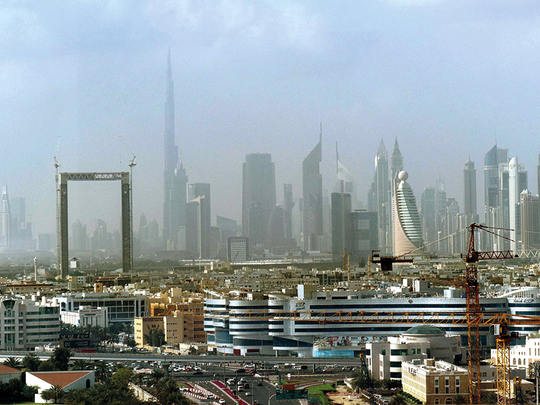
Dubai
Those extra-elastic post-handover plans of two years and more come at a price … for the concerned developers. Stretch them all the way to 10 years after handover, and developers are effectively losing out based on the property’s current value.
Because if you are factoring in future inflation, it means that the future payments made will have shrunk in “real” terms compared with those that are made now or in the near-term.
So, while developers in Dubai have not radically started discounting on their off-plan launches, they are doing so through their post-handover plans. “When developers offer post-handover payment plans, they effectively act as financiers to the end-user — but they do so without charging interest,” said Sameer Lakhani, Managing Director of Global Capital Partners, the real estate consultancy. “The interest is embedded into the price; so in present value terms, they are offering a discount.
“At the same time, where investors have approached developers and offered to pay in accelerated terms, in return, developers have offered straight discounts. We can approximate that margins have been reduced by as much as 15 per cent.
“Margin erosion clearly has been less for the more established developers, but there has been a clear downward trend across the industry.”
Multiple industry sources, including chiefs of Dubai’s master-developers, that there is a limit to how much stretched payment plans — the ones that go beyond five years — can help the property market. Sure, they are bringing in more buyers into the market, but the price that developers are setting to do so can come back and bite them.
“These payment plans are now being offered across the board, whereas earlier they were limited only to a handful of private sector developers,” said Lakhani. “These incentives have come in because local mortgage providers have not been as aggressive as they were to a select portion on the buyer base — the mid-income housing category where financing is needed the most. It is likely that these payment plan incentives will continue because of the lack of sufficient mortgage support.”
And it’s not only on the post-handover that developers are waiving off future profits. Many are willing to do away with the “Oqood” charges and the like that need to be paid by the buyer to the Dubai Land Department.
A typical property purchase — off-plan or ready — carries these costs for the buyer — a 4 per cent transfer fee plus Dh4,000 trustee fees and Dh580 for the title deed. Then then are the NoC (no-objection certificate) fees ranging from Dh500 to Dh5000, and brokerage fees of 2 per cent.
If financed through a mortgage, the bank processing fees range between 0.25 per cent to 1 per cent of the loan amount.
“Developers are shouldering the initial registration fees, as part of offering incentives to buyers along with post-handover payment plans,” said Lakhani. In net present value terms, it is equivalent to reducing prices and yet developers have had more success with the post-handover incentives.”
How concerned should developers be? In a market that went through a sharp correction from mid-2014 and also saw investors baulking at buying, a turnaround will depend on how much developers are willing to give.
So far, there is little of the straight up discounts on launch prices at the established locations of Dubai Marina, Downtown and Business Bay. In the emerging master-developments, those with off-plan launches have played around with the mix of properties, as in offering smaller units and at lower price points than just focusing on luxury launches. In between they also brought out more mid-market properties, as at Dubai South.
This explains the turnaround witnessed since the fourth quarter of 2016 and which picked up pace since the start of the year.
It has reached a point where gradually “in community after community, launch prices have slowly crept higher, even as generous post handover payment plans have been released,” said an industry source. “The trend that is expected to continue through to the first part of next year.”
Launch prices are firming up in Dubai’s newest hotspots
At Dubai Creek Harbor and Dubai Hills, there is a slow rise in launch prices over the three years. And despite the slowdown, the higher launch prices have for the most part been absorbed. In Dubai South, launch prices are all over the place, because the number of developers are greater in number, “allowing each developer the ability to attract a specific investor base”. But even there, prices have moved up over time.












